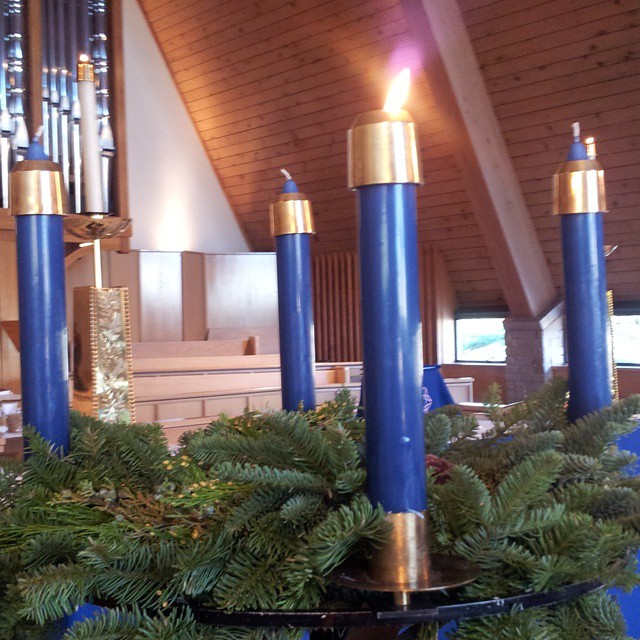Advent has begun. Some of us have decorated our Christmas trees and assembled our nativity sets. This year I have found it rather challenging. Kenneth Bailey’s imagery in Jesus Through Middle Eastern Eyes, of Jesus born in the middle of a family home rather than a stable has caught my attention and I want to begin by inviting you too into a very crowded manger scene and asking you the question we will explore throughout this season: Who is welcome at your manger?
Kenneth Bailey explains, that the Greek word (katalyma or kataluma) translated as inn in Luke 2:7 does not mean a commercial building with rooms for travelers. It’s a guest space, typically the upper room of a common village home.
“A simple village home in the time of King David, up until the Second World War, in the Holy Land, had two rooms—one for guests, one for the family. The family room had an area, usually about four feet lower, for the family donkey, the family cow, and two or three sheep. They are brought in last thing at night and taken out and tied up in the courtyard first thing in the morning.
“Out of the stone floor of the living room, close to family animals, you dig mangers or make a small one out of wood for sheep. Jesus is clearly welcomed into a family home,” See the entire article here
It was to this simple village home that the shepherds and wise men alike came. Shepherds despised and regarded as unclean by their society, are visited by angels and invited to join the great home coming celebration that marks the coming of the child who will become the Messiah. That they were welcomed and not turned away from this home is remarkable. This is good news indeed for the outcast and the despised.
Then the wise men come, according to Bailey, rich men on camels, probably from Arabia. And they come not to the city of Jerusalem where the Jews thought God’s glory would shine, but to the child born in a manager around whom there is already a great light. The wise men come to find a new home, a new place of belonging that has beckoned to them across the world. This too is remarkable and good news for people of all nations who long for a place to call home.
The question that stirs in my mind which I have been talking about for the last couple of months is: Who is welcome at the manger? Who else do we invite to this celebration that may otherwise be ignored or excluded. Are the people from Ferguson there – both white and black, are the ebola victims, the people of Syria and Iraq, those who have been forced into prostitution and those who have violated them there? What about those in prison, people of other sexual persuasions, those of other religions, the homeless who find more and more cities shut them out? What about those from whom we are estranged? Do we think there is a place for everyone at the manger? If so how do we extend that invitation so that these people feel welcome?
When I invited you, a couple of months ago, to journey through Advent with us I mentioned that one of the reflections in our new devotional A Journey Toward Home, is on the French custom of santons:
Santons are, literally, “little saints.” Part of a typical French Nöel crèche (Christmas Nativity scene), santons come in work clothes to visit the Holy Family. They bring the Christ Child presents they have made or grown, hunted or sold. They perform or offer simple gestures of thoughtfulness…..
The shepherds summon all Provençal villagers. They bring their unique gifts to honor the newborn child: the baker (or his son) with typical Provençal breads like la banette and le pain Calendal (a round country loaf marked with a cross and baked only at Christmastime), the vegetable merchant, the cheese vendor, the basket maker, the wine grower, the humble woman or man who brings only a bundle of sticks for a fire to keep the baby warm.
A poor old man, who thinks he has nothing to give the Baby, holds his lantern and offers to light the way for others. His gift of thoughtfulness and courtesy earns him a place in the scene.
I love this idea of all our neighbours, those we enjoy and those we don’t want to have anything to do with, clustered around the manger, invited into that place of intimate hospitality with God. In the birth of Jesus we are called towards a new family and a new home. There are family and friends and animals. And special invitations by angels for the despised and rejected, and a star to guide the strangers and those who seem far off. The new family and the home envisioned in the birth of Jesus is inclusive of all who accept God’s invitation.
I hope that you will journey through Advent and Christmas with us as we create our own “santons”, santons of words not figures of clay as we imagine together some of the people gathered around the very crowded manger with us. Lets help others to see the embracing love of God for all of humankind in the birth of the child Jesus.

